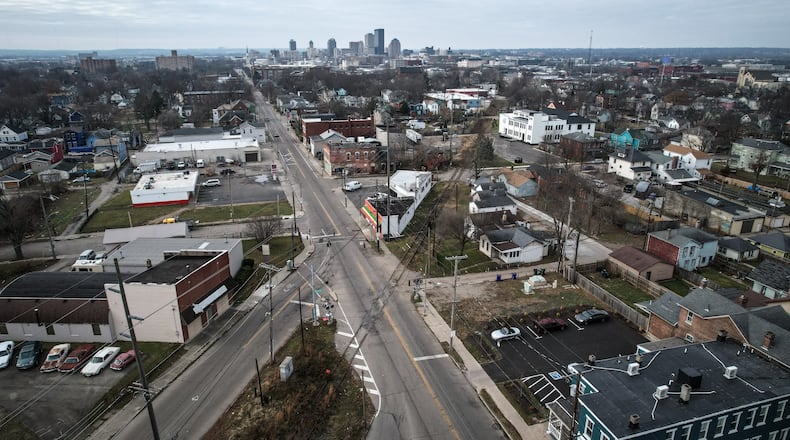As part of its funding application, the city said it might pursue and implement the “most progressive, housing-friendly zoning code in the Midwest” that could be a model for other cities.
“It would be beneficial for housing in many, many East Dayton neighborhoods if the Flight Line truly comes to fruition,” said Tony Kroeger, Dayton’s division manager of planning and land use. “That presumes the acquisition successfully occurs, and we believe that it will.”
Dayton plans to apply for about $4.5 million in grant funding from the U.S. Department of Housing and Urban Development’s Pathways to Removing Obstacles to Housing program.
The program, which is open to communities and organizations across the nation, has about $85 million to award. Competition for the funding could be intense.
Dayton’s grant application says the city may review and make changes to its zoning code and zoning map to try to help preserve existing housing and encourage the creation of a variety of new types of housing.
Dayton might look at changing minimum parking, setback and lot size requirements. The city might consider modifying maximum height or density rules for some neighborhoods and districts, the city’s application to HUD states.
Credit: JIM NOELKER
Credit: JIM NOELKER
Dayton proposes analyzing its zoning code to try to identify and remove barriers to housing production and preservation.
The city says allowing more types of housing as a right or a permitted use could be helpful. One example is allowing existing multi-family buildings in single-family zoning districts to be used for that purpose, even if the properties lost their non-conforming use because of vacancy.
The application also says grant funding could help construct the first phase of the Flight Line multi-use trail, which is a project the city says would “stimulate” new housing investment.
Dayton is in negotiations to purchase a 6.5-mile vacated section of railroad that belongs to Norfolk Southern.
The city earlier this year made an offer to buy the track, and the railroad company is expected to make a counteroffer likely sometime during the holiday season.
The city has wanted to acquire the rail line for years in the hopes of converting it into a trail that would connect East Dayton neighborhoods to downtown and the regional network of bike paths and paved trails.
The first phase of the project would reconstruct a 1.2-mile section of the rail line from McDonough Street to Steve Whalen Boulevard, according to the city’s grant application. That project alone is expected to cost about $2 million.
The track is surrounded by vacant, deteriorating and historic buildings that are good candidates for adaptive reuse, plus empty lots ideal for infill development, city staff said.
“The Flight Line investment is the key to unlocking the potential of inner eastside neighborhoods,” the city said.
Former warehouse buildings near Keowee and Bacon streets could become 250 new housing units and 200 additional units could be built near Bainbridge, Keowee and East Fourth and East Fifth streets, according to the city’s funding application.
Vacant land near Bacon and Dutoit streets could welcome 50 new housing units, while 100 existing, substandard single-family homes in Twin Towers and the Historic Inner East areas could be rehabbed, the city said.
Dayton remains highly segregated, and the Flight Line could create an area of opportunity for everyone, offering a mix of housing types, Kroeger said.
“I think it’s a unique approach,” he said. “But I think we have to have a unique application because we’re competing against every city bigger than us and most smaller (ones).”
Kroeger said the city views this funding opportunity as a chance for a fundamental shift in its housing regulations. He said the city constantly tries to modernize its code but that’s usually more of an incremental approach.
About the Author




